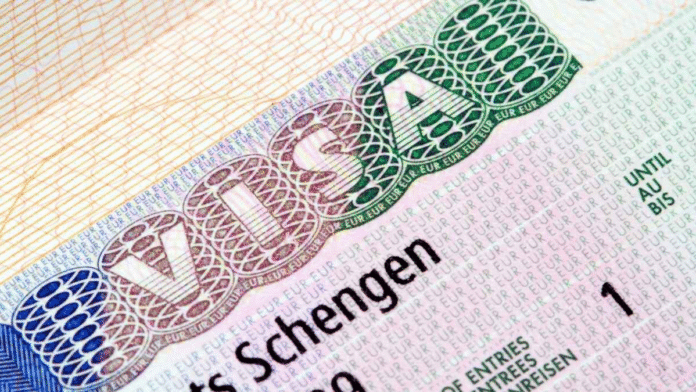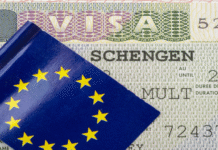To enhance travel efficiency and safety for users of its 29 member states, the European Union is implementing a new, secure digital 2D barcode system, which will replace the traditional Schengen visa stickers. This change aims to improve cross-border travel within the EU by bringing outmoded visa processes up to date, minimizing the opportunity for fraudulent activity, and automating border control through real-time verification with the central visa database. The EU is seeking to strengthen its border control innovation by automating systems for faster and simpler travel, which will dramatically expedite entry for visitors.
The EU is set to revolutionize Schengen visa travel with a new digital 2D barcode system, offering faster processing and improved security.
The European Union is stepping into a new era of border control by officially phasing out traditional Schengen visa stickers in favor of a secure, digitally encoded 2D barcode. This move marks one of the most significant updates to the Schengen visa system in decades, targeting improved efficiency, enhanced security, and a more streamlined travel experience for millions of international visitors.
This transition is part of the EU’s broader digitalization efforts that were formally approved by European foreign ministers in 2024. The newly adopted digital visa system will be rolled out across all 29 countries that make up the Schengen Area.
How the New Digital Visa Will Work
Instead of attaching a physical visa sticker to travelers’ passports, approved applicants will now receive a unique digital 2D barcode. This barcode will be directly integrated into the EU’s central visa information system (VIS), allowing border authorities to instantly access and verify travelers’ personal data, visa details, and validity in real time.
At border checkpoints, travelers will simply scan the code using automated systems, significantly reducing processing times and minimizing paperwork. These barcodes are encrypted to prevent fraud, counterfeiting, or unauthorized duplication—offering a robust solution to longstanding visa security issues.
Real-Time Access for Border Control
The most revolutionary feature of the new system is its direct connectivity with the EU’s visa database. Immigration officers can instantly retrieve a traveler’s visa information at the tap of a scanner, ensuring real-time verification. This move will speed up entry and exit processes and improve overall border security by reducing human error and manual inspection.
For travelers, this translates into fewer delays at immigration desks and a smoother entry experience into Schengen countries, whether arriving by air, land, or sea.
Successful Pilot at the Paris Olympics
The digital visa system was given a real-world trial during the 2024 Paris Summer Olympics. In this controlled environment, over 70,000 digital visas were successfully issued and utilized without incident. The pilot served as a proof-of-concept for both security and usability, earning praise from officials and participants alike for its smooth execution.
The Olympic trial highlighted the potential of this system not just for tourists, but also for athletes, journalists, and event staff who require streamlined, short-term travel clearance.
What This Means for Indian Travelers and Beyond
Indian travelers—one of the largest applicant groups for Schengen visas—are expected to see noticeable benefits from this digital upgrade. First-time applicants will still be required to submit biometrics at visa application centers. However, frequent visitors will gain access to faster reapplication processes, reduced paperwork, and even biometric e-gates at select entry points in the future.
By simplifying repeat applications and offering contactless border clearance for eligible travelers, the EU is signaling its intent to welcome visitors with greater ease—especially from high-volume markets like India, China, and the Gulf region.
A Step Forward for Global Mobility
This overhaul is more than just a technological shift; it’s a strategic move by the EU to modernize its border management and make the Schengen Zone more accessible. In a post-pandemic world where seamless travel is increasingly expected, this upgrade positions Europe as a forward-thinking destination ready to meet 21st-century travel demands.
The digital visa not only enhances security but also supports tourism recovery by encouraging more streamlined mobility for business and leisure travelers alike.
What Travelers Should Expect
- Application Portal: Once fully rolled out, applicants will complete the visa process entirely online, including uploading documents and tracking status.
- Biometric Requirements: Initial applications will still require an in-person visit to submit fingerprints and photos.
- Barcode Issuance: Approved applicants will receive a secure 2D barcode to be scanned at border crossings.
- Repeat Traveler Perks: For those with previous visas, renewals will be faster, and access to biometric e-gates may be granted.
A Future-Focused System for a Connected World
The EU’s decision to implement a barcode-based visa system reflects a growing global trend toward digitizing travel credentials. Other countries, including Australia and the United States, have already adopted elements of e-visas and biometric screening, but the EU’s central 2D code system stands out for its comprehensive integration and cross-border applicability.
By linking every visa to a secure digital infrastructure, the EU is eliminating the need for manual stamps and paperwork, cutting back on fraud, and improving traveler convenience—all while maintaining strong oversight of entry protocols.
The European Union’s introduction of a digital Schengen visa marks a transformative step in international travel. The adoption of a secure 2D barcode system aims to make travel into the EU faster, safer, and more efficient than ever before.
With the groundwork already laid through a successful pilot and institutional backing from EU member states, the digital transition is set to redefine how millions experience cross-border travel into Europe. For tourists, business travelers, and immigration authorities alike, the future of Schengen travel is not just digital—it’s already arriving.











